I am proud to announce that the great animation movie Room on the Broom, directed by Max Lang and and Jan Lachauer, my brother, will premiere tomorrow, on Christmas Day at 4:35pm on BBC1. Based on a book written by by Julia Donaldson and illustrated by Axel Scheffler, the movie tells the story of a kind witch who invites a surprising collection of animals to join her on her broom, much to the frustration of her cat. The gang ultimately saves the witch from a fearsome dragon, and in gratitude she rewards them with a magnificent new broom which has room for everyone. The film is produced by Magic Light Pictures.
The Observer states that for those of you, who have been disapointed by Peter Jackson's Hobbit, Room on the Broom might be more satisfying, since it "largely eschews tricks that have made Peter Jackson's Hobbit film controversial".
Monday, 24 December 2012
Thursday, 6 December 2012
Workshop at the Academy of Media Arts Cologne
Volker Helm and myself have been invited by Prof. Trogemann for a workshop about generative design and modelling techniques at his legendary labIII, the institution at the very interface between computer science and art in Germany. Trogemann is well known for his books, dealing with the history and materiality of computing, and with the introduction to programming for artists.
Thursday, 15 November 2012
Masonry Workshop at ETH Zurich
 A stunning Catalan free-form vault has been designed and build by students during a one week workshop organised by Prof. Deplazes and Prof. Block from ETH Zurich. RhinoVAULT has been used for the design of the complex compression-only shape.
For details, visit the homepage of the BLOCK Research Group.
A stunning Catalan free-form vault has been designed and build by students during a one week workshop organised by Prof. Deplazes and Prof. Block from ETH Zurich. RhinoVAULT has been used for the design of the complex compression-only shape.
For details, visit the homepage of the BLOCK Research Group.



Thursday, 25 October 2012
Gangnam Style by Ai Weiwei
A great parody on Psy’s hit: "Gangnam Style" : Don’t miss to visit Ai Weiwei’s Google+ account and youtube channel.
Saturday, 20 October 2012
Philip Ball and Patterns of Nature
At the Advances in Architectural Geometry Conference 2012 in Paris, I had the pleasure to watch the keynote lecture by the science writer Philip Ball.
He is the author of several popular books on science, including works on the nature of water, pattern formation in the natural world, colour in art, and the science of social and political philosophy. In three of his books Ball explictitly discusses the formation of patterns in nature : "Shapes", "Flow", and "Branches".
A similiar topic has been presented by Ball in February 2012 at the The New York Institute for the Humanities, a transcript of one of his lectures dealing with a similar topic can be found here.
According to Ball, one major reference for pattern formation in nature is the Belousov-Zhabotinsky (BZ) reaction. The javascript applet below is a cellular automata inspired by the BZ reaction, with randomized input parameters.
A similiar topic has been presented by Ball in February 2012 at the The New York Institute for the Humanities, a transcript of one of his lectures dealing with a similar topic can be found here.
According to Ball, one major reference for pattern formation in nature is the Belousov-Zhabotinsky (BZ) reaction. The javascript applet below is a cellular automata inspired by the BZ reaction, with randomized input parameters.
Tuesday, 9 October 2012
Prototypical Institute Building at ETH Zurich
At ETH Zurich, currently a new prototypical building for the Institute of Technology in Architecture is being planned in a collaborative process among the members of the institute. An exhibition at Science City Campus, ETH Zurich, is presenting the current state of the project.
 Video and image courtesy of ETH Zurich.
Video and image courtesy of ETH Zurich.
For the design of the roof, research conducted at the Chair of Structural Design has been combined with robotic fabrication processes developed at the Chair of Architecture and Digital Fabrication to design a lightweight wood construction. The structural engineers are Dr. Lüchinger + Meyer Bauingenieure AG.
 The Sequential Structure 2, a prototypical pavilion developed at the Chair of Architecture and Digital Fabrication, served as reference for the roof construction.
The Sequential Structure 2, a prototypical pavilion developed at the Chair of Architecture and Digital Fabrication, served as reference for the roof construction.
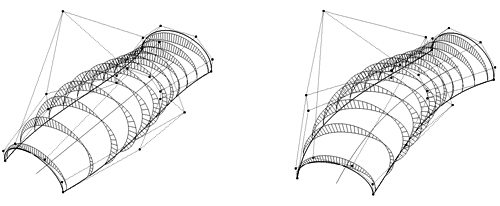 Paremetric modelling strategies developed at the Chair of Structural Design allowed for the direct inscription of structural constraints into the roof geometry.
Paremetric modelling strategies developed at the Chair of Structural Design allowed for the direct inscription of structural constraints into the roof geometry.
 Video and image courtesy of ETH Zurich.
Video and image courtesy of ETH Zurich.For the design of the roof, research conducted at the Chair of Structural Design has been combined with robotic fabrication processes developed at the Chair of Architecture and Digital Fabrication to design a lightweight wood construction. The structural engineers are Dr. Lüchinger + Meyer Bauingenieure AG.
 The Sequential Structure 2, a prototypical pavilion developed at the Chair of Architecture and Digital Fabrication, served as reference for the roof construction.
The Sequential Structure 2, a prototypical pavilion developed at the Chair of Architecture and Digital Fabrication, served as reference for the roof construction. Paremetric modelling strategies developed at the Chair of Structural Design allowed for the direct inscription of structural constraints into the roof geometry.
Paremetric modelling strategies developed at the Chair of Structural Design allowed for the direct inscription of structural constraints into the roof geometry.Monday, 3 September 2012
Advances in Architectural Geometry 2012
I am looking forward to present my latest research at the Architectural Geometry Conference 2012. Download the conference program here.
 The conference proceedings can be purchased from Springer.
The conference proceedings can be purchased from Springer.
 The conference proceedings can be purchased from Springer.
The conference proceedings can be purchased from Springer. Wednesday, 25 July 2012
Tamedia Headquarters by Shigeru Ban II
New photos from Shigeru Ban´s construction site in Zurich, Switzerland:
 A great detail: sheared node geometry, resulting from the chamfered corner of the building in plan.
A great detail: sheared node geometry, resulting from the chamfered corner of the building in plan.
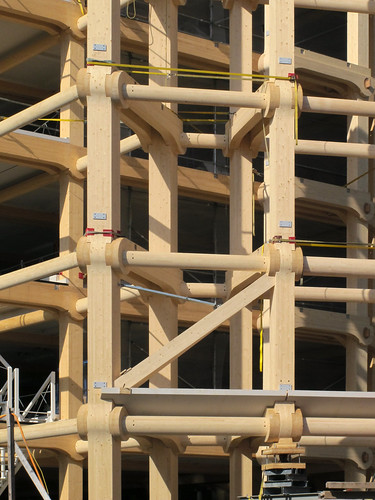
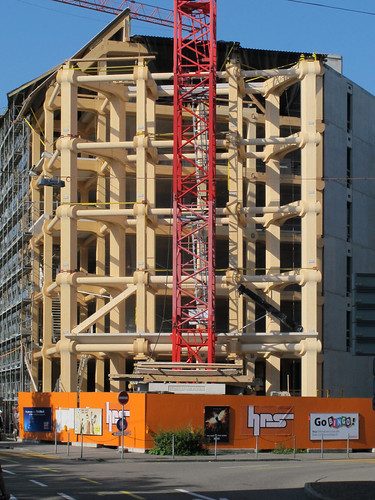
 A great detail: sheared node geometry, resulting from the chamfered corner of the building in plan.
A great detail: sheared node geometry, resulting from the chamfered corner of the building in plan. 

Thursday, 21 June 2012
Soccer: Germany vs. Greece
I am looking forward to the game tomorrow ... hopefully it does not end as in Monty Python's Philosophers' Football Match:
There is sophisticated mathematics behind the geometry of the soccer ball. Pieter Huybers, a dutch structural engineer, studied this field extensively and developed an optimized ball geometry with respect to roundness. He presented his work at the Structural Morphology Group Seminar 2011 in London.
There is sophisticated mathematics behind the geometry of the soccer ball. Pieter Huybers, a dutch structural engineer, studied this field extensively and developed an optimized ball geometry with respect to roundness. He presented his work at the Structural Morphology Group Seminar 2011 in London.

Tuesday, 5 June 2012
Digital Tools in Sculptural Practice
I just discovered a great blog dealing with digital modeling and fabrication techniques in contemporary sculptural practice. Student work from two courses held by Andrew F. Scott at the Savannah College of Art and Design is presented.





Tuesday, 29 May 2012
Ai Weiwei in Zurich
Since last Friday Ai Weiwei's marble sculpture Sofa in White (2011) is exibited on Paradeplatz, Zurich, Switzerland, as part of the
Art And The City project.

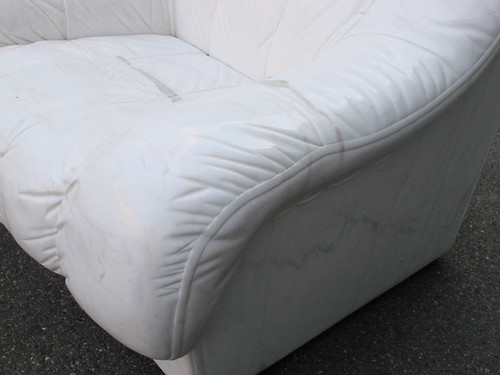
It seems not to be very comfortable though ...


It seems not to be very comfortable though ...

Monday, 14 May 2012
ZipStrip
Chris Precht, master student at TU Vienna and founder of prechteck combined a GH definition I developed for modelling paperstrip geometries with the principle of ZipShape, developed by Christoph Schindler, to model these beautiful prototypes, as part of his thesis:
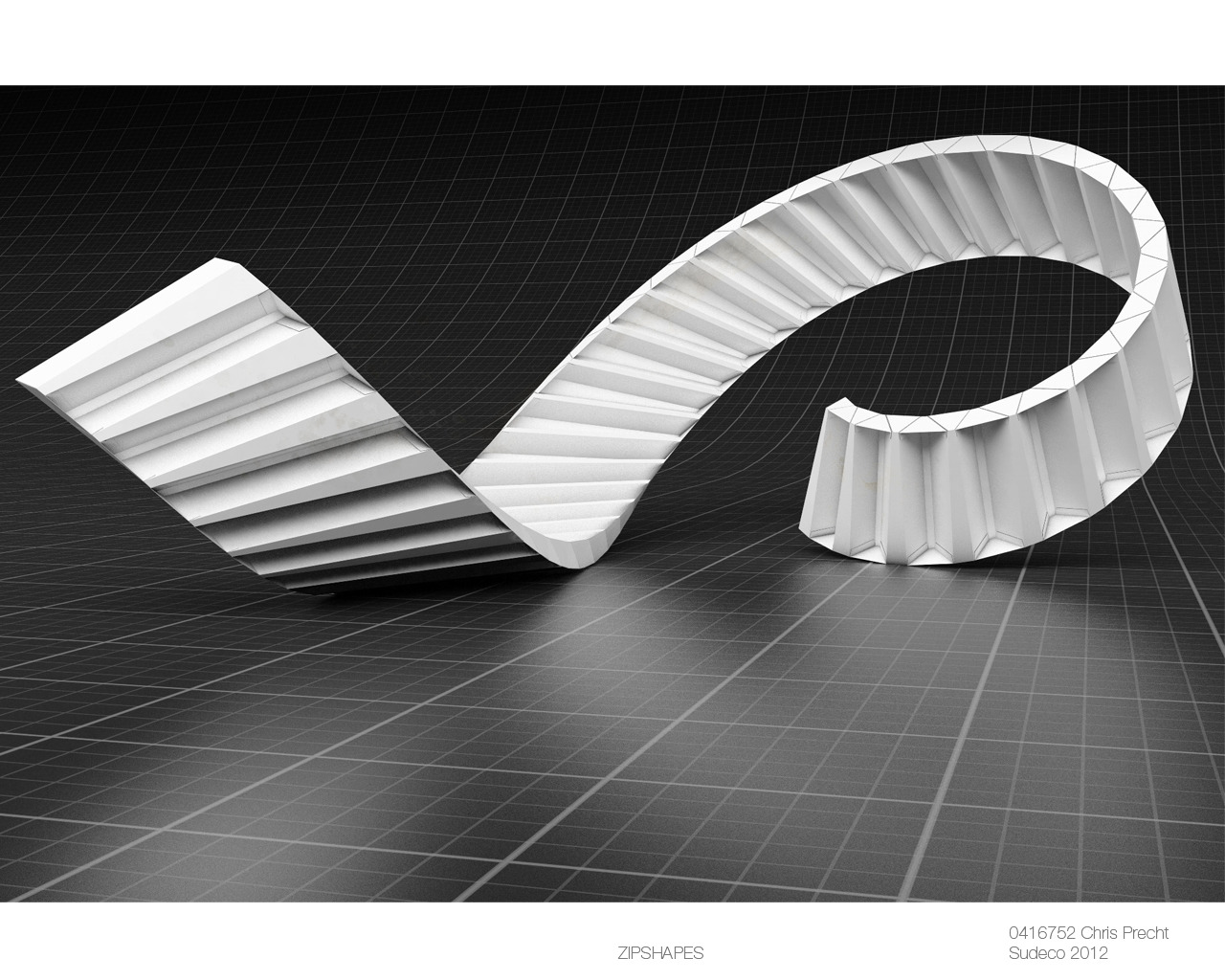
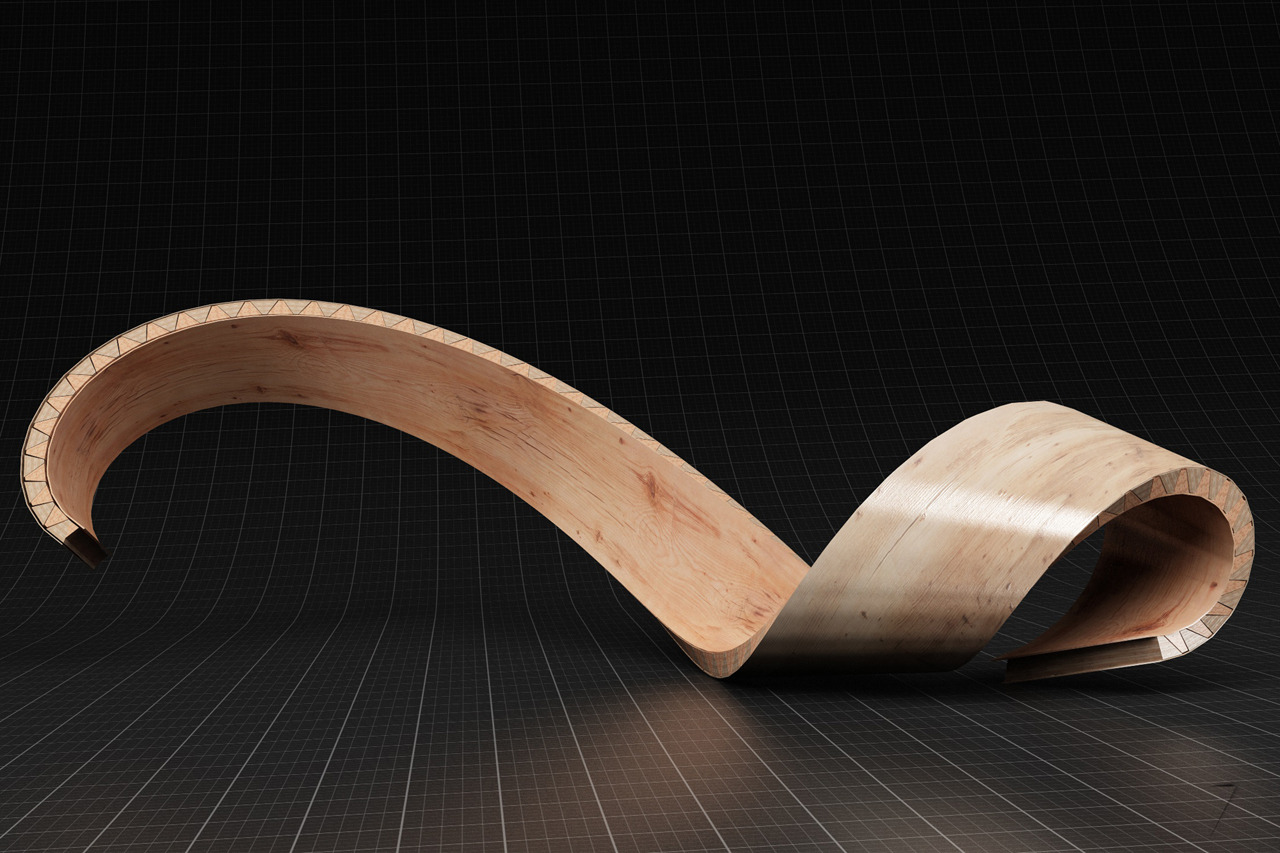
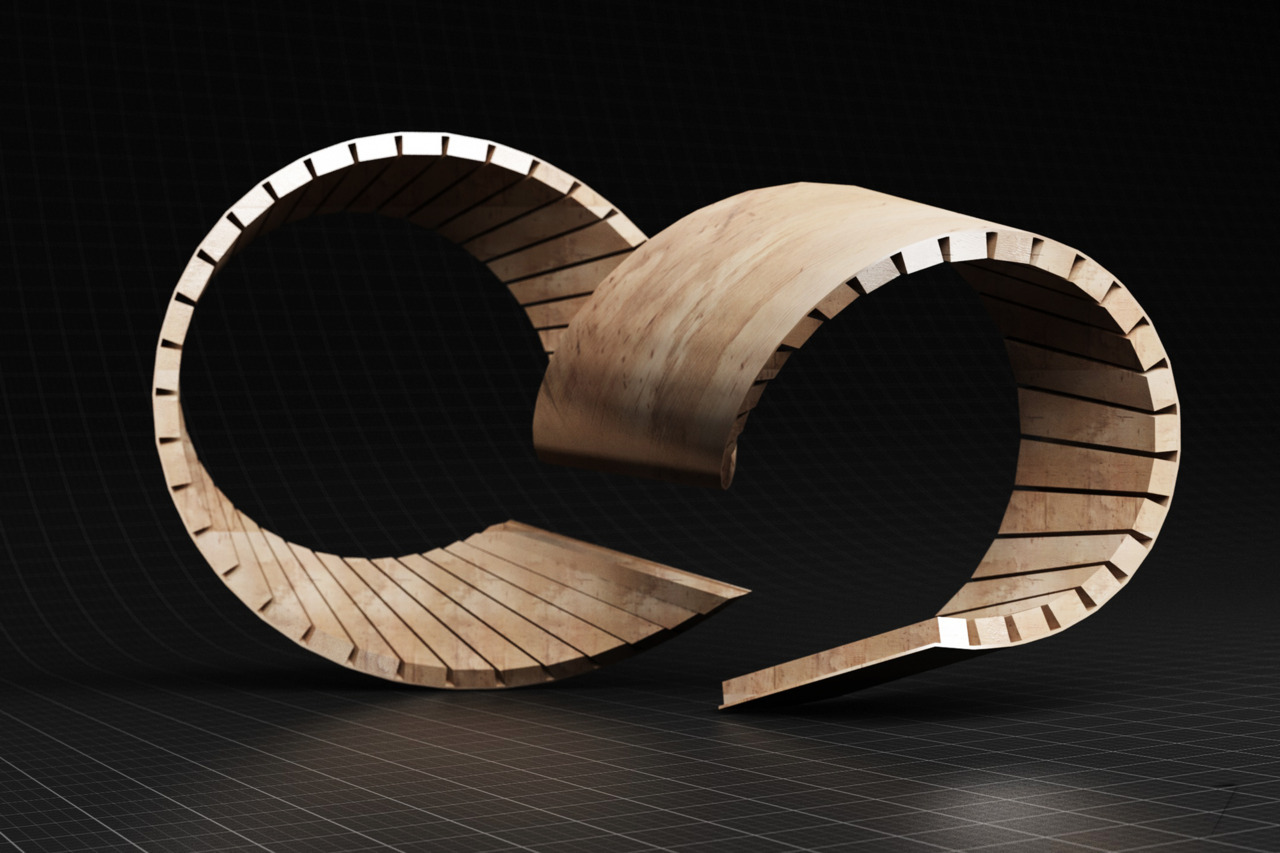 Images (c) by Chris Precht.
Images (c) by Chris Precht.


 Images (c) by Chris Precht.
Images (c) by Chris Precht.Thursday, 10 May 2012
RhinoVAULT Beta released!
The BLOCK Research Group is pleased to announce the pre-release of rhinoVAULT Beta V0.2! The current version is now freely available for download. The Rhinoceros® Plug-In emerged from current research on structural form finding based on the Thrust-Network-Approach to intuitively create and explore compression-only structures.
”The resistant virtues of the structure that we seek depend on their form; it is through their form that they are stable, not because of an awkward accumulation of material. There is nothing more noble and elegant from an intellectual viewpoint than this: to resist through form.” - Eladio Dieste, 1996
Matthias Rippmann
Lorenz Lachauer
Philippe Block
”The resistant virtues of the structure that we seek depend on their form; it is through their form that they are stable, not because of an awkward accumulation of material. There is nothing more noble and elegant from an intellectual viewpoint than this: to resist through form.” - Eladio Dieste, 1996
Matthias Rippmann
Lorenz Lachauer
Philippe Block
Tuesday, 8 May 2012
Tamedia Headquarters by Shigeru Ban
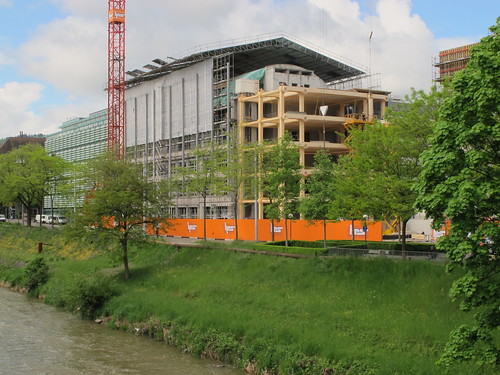 Yesterday I took pictures of the construction site of the Tamedia office building in Zurich, Switzerland, designed by Shigeru Ban. This webcam shows the construction site, it is located here.
Yesterday I took pictures of the construction site of the Tamedia office building in Zurich, Switzerland, designed by Shigeru Ban. This webcam shows the construction site, it is located here.
The pictures below show the assembly of a standing frame element, five story high, in front of the already existing structure. This frame is later shifted to the position of the next frame axis in plan. Watch an animation of the construction sequence here.

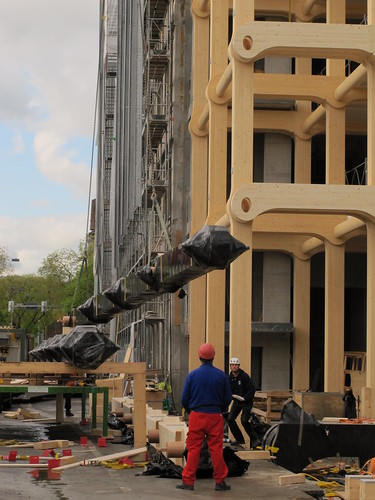


Tuesday, 1 May 2012
Discrete Textiles
Inspired by the work of Elisa Strozyk, I wrote a script, that imposes a specific length to all edges of a given mesh. For triangulated input meshes, this results in equilateral triangles as faces. Download the python script for Rhino here.
The final geometry is a discrete representation of a crumpled developable surface, if the mesh is consisting only of nodes with the valence of six and of triangular faces. More digitally crumpled surfaces by Tamahiro Tachi on flickr. A crumpled mesh torus.
The final geometry is a discrete representation of a crumpled developable surface, if the mesh is consisting only of nodes with the valence of six and of triangular faces. More digitally crumpled surfaces by Tamahiro Tachi on flickr. A crumpled mesh torus.
Wednesday, 28 March 2012
Skyscrapers and Surrealism
This drawing by Madelon Vriesendorp, artist and co-founder of OMA, is trying to catch different associations with Norman Foster's Gherkin. It has been published lately in Charles Jencks's book The Story of Post-Modernism.
Madelon Vriesendorp's great animated film, Caught in the Act (Flagrant Délit) from 1979, presents a surrealistic vision of the life of skyscrapers, showing Chrysler and Empire State Building having sex, the naked Statue of Liberty and more great scences. Madelon Vriesendorp is famous for her paintings that have been used as illustrations for Rem Koolhaas's book Delirious New York. For more information about her work, read this interview.
Madelon Vriesendorp's great animated film, Caught in the Act (Flagrant Délit) from 1979, presents a surrealistic vision of the life of skyscrapers, showing Chrysler and Empire State Building having sex, the naked Statue of Liberty and more great scences. Madelon Vriesendorp is famous for her paintings that have been used as illustrations for Rem Koolhaas's book Delirious New York. For more information about her work, read this interview.
Thursday, 8 March 2012
Žižek on Ideology of Form
Watch the full lecture held at the Fundación Arquitectura y Sociedad, Madrid, June 10, 2010, here. The essay Architectural Parallax by Žižek deals with similar topics.
Monday, 13 February 2012
Frank Gehry’s Throwaway Joke
A classic: Frank Gehry as guest star in The Seven-Beer Snitch, the fourteenth episode of The Simpsons' sixteenth season. Now he regrets his appearance in the Simpsons ...
Monday, 16 January 2012
RhinoVAULT Workshop in Innsbruck
Invited by Günther H. Filz and Rupert W. Maleczek, the Block Research Group will give a workshop at koge, University of Innsbruck, Austria, as part of the Ringvorlesung 2012. Prof. Philippe Block, Matthias Rippmann and myself will lead a design workshop using RhinoVAULT, a plug-in for Rhino, that allows for the intuitive design of compression-only shapes, offering a maximum control of the geometry.
Friday, 13 January 2012
Building the Bubble - Architecture and Financial Crisis
Since a few days a report by Barclays Capital that points out correlation between skyscraper boom and economic crisis is topic of international news, e.g. BBC and BI. Economist Andrew Lawrence suggested in 1999 the Skyscraper Index, as predictor of economic crisis.

The relation between skyscraper building and finance has earlier been discussed earlier in the great book Form Follows Finance by Caroll Willis.

Furthermore, I found an interesting figure related to this topic on page 94 in Alex Lehnerer’s Book Grand Urban Rules, showing the relation between industrial production and building height limitations in Chicago.

The relation between skyscraper building and finance has earlier been discussed earlier in the great book Form Follows Finance by Caroll Willis.

Furthermore, I found an interesting figure related to this topic on page 94 in Alex Lehnerer’s Book Grand Urban Rules, showing the relation between industrial production and building height limitations in Chicago.







